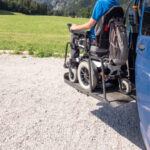Workplace safety is a critical concern across all industries, and proper footwear, or werkschoenen, plays a vital role in preventing injuries and ensuring the well-being of workers. The significance of wearing appropriate work shoes cannot be overstated, as they provide essential protection against various hazards, enhance comfort, and improve overall productivity. This article explores the impact of proper werkschoenen on workplace safety, detailing their benefits and the risks associated with inadequate footwear.
The Role of Werkschoenen in Preventing Injuries
Protection Against Impact and Compression
One of the primary functions of werkhandschoenen is to shield the feet from heavy objects and compression injuries. Safety features like steel or composite toe caps are designed to withstand substantial force, protecting workers from potentially severe injuries caused by falling tools, materials, or equipment.
Puncture Resistance
Work environments such as construction sites or factories often present hazards like sharp objects on the ground. Werkschoenen equipped with puncture-resistant midsoles, made from materials like Kevlar, prevent nails, screws, and other sharp objects from penetrating the sole and causing injury.
Slip Resistance
Slips, trips, and falls are common workplace accidents that can lead to significant injuries. Werkschoenen with slip-resistant outsoles provide better traction on wet or oily surfaces, reducing the risk of falls. This feature is especially crucial in environments where spills are frequent, such as kitchens, hospitals, and manufacturing plants.
Electrical Hazard Protection
For workers in electrical or electronic fields, specialized werkschoenen offer protection against electrical hazards. These shoes are designed to provide insulation or dissipate static electricity, preventing electrical shocks and reducing the risk of electrocution.
Enhancing Comfort and Reducing Fatigue
Ergonomic Design
Modern werkschoenen are designed with ergonomics in mind, ensuring a proper fit and support for prolonged wear. Features such as cushioned insoles, arch support, and breathable materials enhance comfort, allowing workers to remain on their feet for extended periods without experiencing discomfort or fatigue.
Reducing Fatigue
Proper footwear can significantly reduce fatigue, which is a common cause of workplace accidents. By providing adequate support and cushioning, werkschoenen help maintain proper posture and reduce strain on the feet, legs, and lower back. This reduction in fatigue leads to increased alertness and a lower likelihood of errors or accidents occurring due to tiredness.
The Risks of Inadequate Footwear
Increased Injury Risk
Wearing inadequate footwear, such as casual shoes or non-safety boots, exposes workers to a higher risk of injuries. Lack of protective features like toe caps and puncture-resistant soles leaves the feet vulnerable to various hazards, increasing the likelihood of accidents and injuries.
Long-Term Health Issues
Inadequate footwear can lead to long-term health issues, including chronic pain in the feet, knees, hips, and lower back. Poorly designed shoes that lack proper support and cushioning can cause conditions such as plantar fasciitis, arthritis, and other musculoskeletal disorders, ultimately affecting a worker’s ability to perform their job effectively.
Reduced Productivity
Discomfort and injuries resulting from improper footwear can lead to reduced productivity. Workers who are in pain or dealing with injuries are less likely to perform at their best, and frequent absences due to foot-related health issues can disrupt workflow and decrease overall efficiency.
Choosing the Right Werkschoenen
Assessing Workplace Hazards
Selecting the appropriate werkschoenen begins with a thorough assessment of the specific hazards present in the workplace. Identifying potential risks such as heavy objects, sharp materials, slippery surfaces, and electrical hazards helps determine the necessary safety features required in the footwear.
Ensuring Proper Fit and Comfort
Proper fit and comfort are crucial when choosing werkschoenen. Shoes that are too tight or too loose can cause discomfort and increase the risk of injury. It’s important to try on different sizes and styles, considering factors like arch support, cushioning, and breathability to find the best fit for long-term wear.
Regular Maintenance and Replacement
Regular maintenance and timely replacement of werkschoenen are essential to ensure their effectiveness. Worn-out shoes may lose their protective features and fail to provide adequate safety and support. Inspecting footwear regularly for signs of wear and tear and replacing them when necessary is key to maintaining workplace safety.
Conclusion
Proper werkschoenen are indispensable in ensuring workplace safety, offering protection against various hazards, enhancing comfort, and reducing fatigue. The risks associated with inadequate footwear, including increased injury rates, long-term health issues, and reduced productivity, underscore the importance of selecting and maintaining the right work shoes. By prioritizing the use of appropriate werkschoenen, employers and workers can create a safer, more productive work environment that promotes overall well-being and efficiency.












